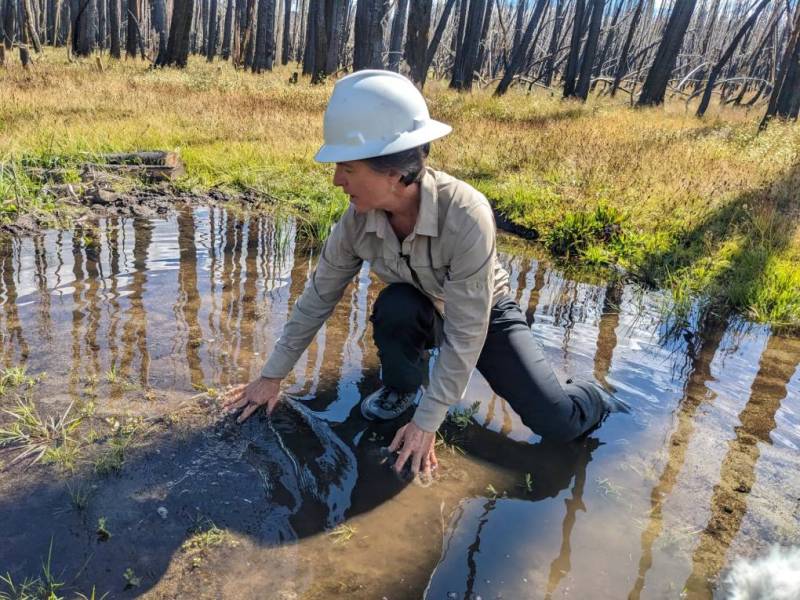This story aired on The California Report — and originally aired on KVPR.
When you think of a meadow, you might picture a field of flowers straight out of a postcard, no trees in sight. But meadows are also key to forest health. And in the Sierra Nevada, most of the meadows that play this role have been degraded or lost.
In order to restore these ecosystems, some groups say we must adopt the mindset of small creatures, like rodents.
Kevin Swift, owner of Swift Water Design, has dedicated his career to restoring meadows in the Sierra Nevada — specifically one a few miles above Shaver Lake called the Lower Grouse Meadow, which was severely affected by the 2020 Creek Fire. As a result of the fire, that area is surrounded by barren hillsides and blackened, charred pine trees.
